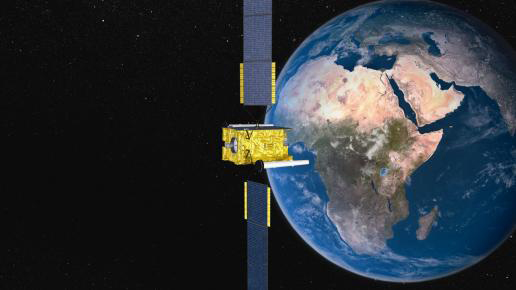Skynet 5A satellite starts move eastwards
Secure X-band and UHF MILSATCOM available for users in the Asia Pacific region by autumn 2015
Airbus Defence and Space has announced that the planned 67,000 km move of the Skynet 5A satellite over the Asia Pacific region is on track. The move from 6° East to 94.8° East will expand Airbus Defence and Space’s capability to provide protected and secure military satcom services to allied governments in the Asia-Pacific region. The satellite will be on station at its new location in the autumn this year.
Airbus Defence and Space announced the planned move of Skynet 5A military communications satellite at the Satellite 2015 Conference in March 2015. The relocation will extend the Skynet constellation coverage and services from 178 West to 163 East, including the Indian Ocean and Western Pacific region. This will provide near-global military X-band and UHF coverage, expanding core service reach for the UK military and augment coalition capabilities in the region.

Airbus Defence and Space owns and operates the hardened Skynet X-band satellite constellation of 8 satellites and the ground network to provide all Beyond Line of Sight (BLOS) communications to the UK Ministry of Defence. The contract also allows other NATO and allied governments such as members of the five-eyes community (besides UK, the USA, Australia, New Zealand and Canada) to use the Skynet system to augment their existing services. Airbus Defence and Space also leases the X-band hosted payload on Telesat’s Anik G1 satellite which covers the Americas and parts of the Pacific including Hawaii and Easter Island.
“The Skynet 5 constellation consists of the world’s most powerful, nuclear hardened and protected, military X-band and UHF satellites,” said Colin Paynter, Head of Airbus Defence and Space UK. “With the move of Skynet 5A, we will expand the availability of our premium secure MILSATCOM services to allied nations in the region who need high grade resilient and secure communications services to complement their existing systems.”
